
The Ljuskrona Project
The Ljuskrona and Apple Tree exhibition celebrates the vision and work of three friends in 1987. Dr. Greta Swenson, Mark Esping and Mardel Esping were curious about a little publicized Christmas object brought to the United States by Swedish immigrant families. Their curiosity and ensuing research led to a National Endowment for the Arts grant and the beginning of the Ljuskrona Project.
A second NEA grant led to the study of woodworking and the documentation of the makers and styles of Swedish Apple Trees (Äppelträden or Blekingestake). A small portion of the final research project may be viewed in the seven panels that highlight both the Ljuskronor and their close cousins, the Swedish Apple Trees.
The Smoky Valley Art & Folklife Center are honoring the work of what became the Folklife Institute of Central Kansas by exhibiting Ljuskronor and Apple Trees borrowed from individuals throughout the Smoky Valley.
Some of the families in the Smoky Valley that had a Ljuskrona as a Christmas Tradition brought the actual structure with them from Sweden. Others created their family decoration using branches found in the sparsely wooded prairie during the first celebrations in the United States. Later, there were people who fashioned their Light Crown after seeing the concept in the home of a neighbor or family member. The Ljuskronor show a marked difference in the design of the structures and in the materials used in wrapping as well as the way the paper is cut to look soft or to suggest the needles of a pine tree. There is a small sample of paper in the exhibit cut to show the different ways of preparing the paper for wrapping.
The Apple Trees experienced greater visibility in Sweden and as a result were also more widely used in the Smoky Valley. This could partly be explained by the large number of woodworkers that immigrated to Kansas, but also because an Apple Tree could be designed to be collapsed into a very small bundle for packing and transporting, something that might more difficult for some styles of Ljuskrona.
The Apple Trees in the exhibition show a diversity of design, but also exhibit the give and take and sharing of ideas and techniques by the woodworkers. Some of the woodworkers shared equipment and/or a workspace. It is also very common for multiple members of one family to create Apple Trees together and then each woodworker begin to develop his or her own style.
The relationship between the Ljuskrona and the Apple Tree can be seen in the exhibition by comparing the elements they have in common. Both decorations have candles, both are made to resemble a somewhat abstract suggestion of a tree and both would brighten any space during the dark days and nights of a Swedish or Prairie winter.
For more information on the Ljuskronor and Apple Trees visit: http://www.folklifeinstitute.com
The research for this project was funded by: The National Endowment for the Arts, The Kansas Humanities, National Endowment for the Arts, the Kansas Historical Society, Old Mill Museum and the Kansas Arts Commission
Swedish Evangelical Mission Church Ljuskrona





This two candle Ljuskrona belonged to the Swedish Evangelical Mission Church which was located 1 mile north of Salemsborg Lutheran Church, Smola, KS. It was found in an abandoned home with the original paper. There were two of this design in the Church that was set on the top of pillars for the Christmas season in the 1880s and 1890s. The Chruch merged with the Smolan Covenant Church in 1912.
Salemsborg Lutheran Church Ljuskrona

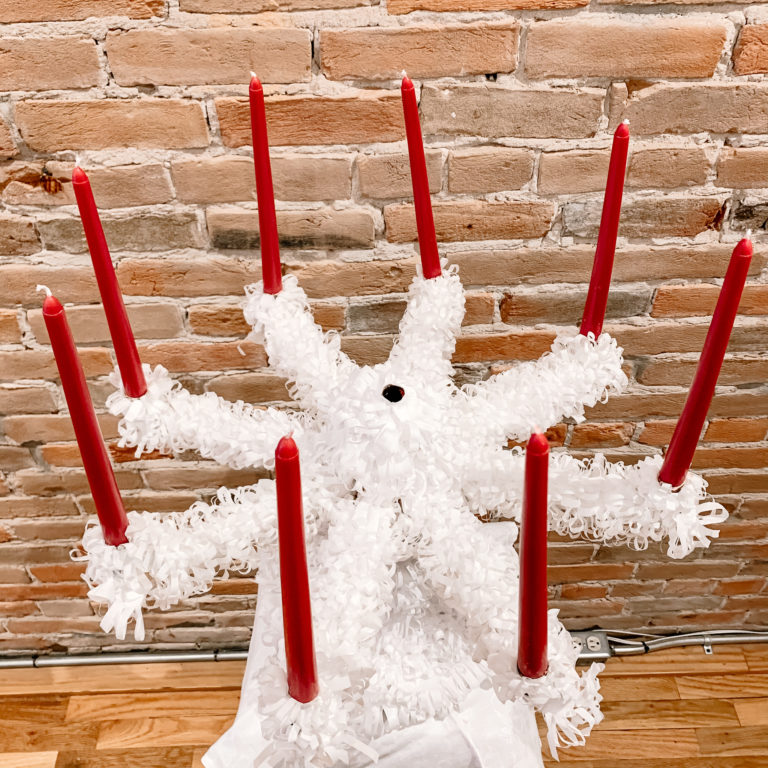

This Ljuskrona is an exact replica of the one made by C.J. Brodine and used by the Swedish pioneers at the first Christmas Eve service in 1869 in the Sod Church, which was the first Salemsborg Lutheran Church. This replica was made by Mark Esping. I was used at Salemsborg in 1989 on Christmas Eve in commemoration of the 120th anniversary. The original Ljuskrona is in a private collection. This replica is owned by Tom and Marlysue Holmquist.
Lan Nelson Ljuskrona

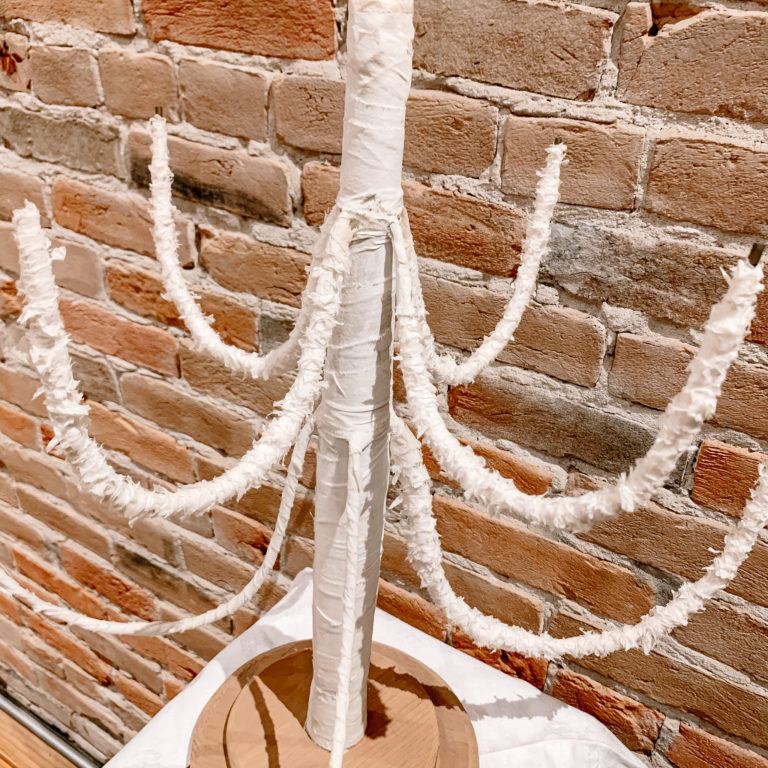
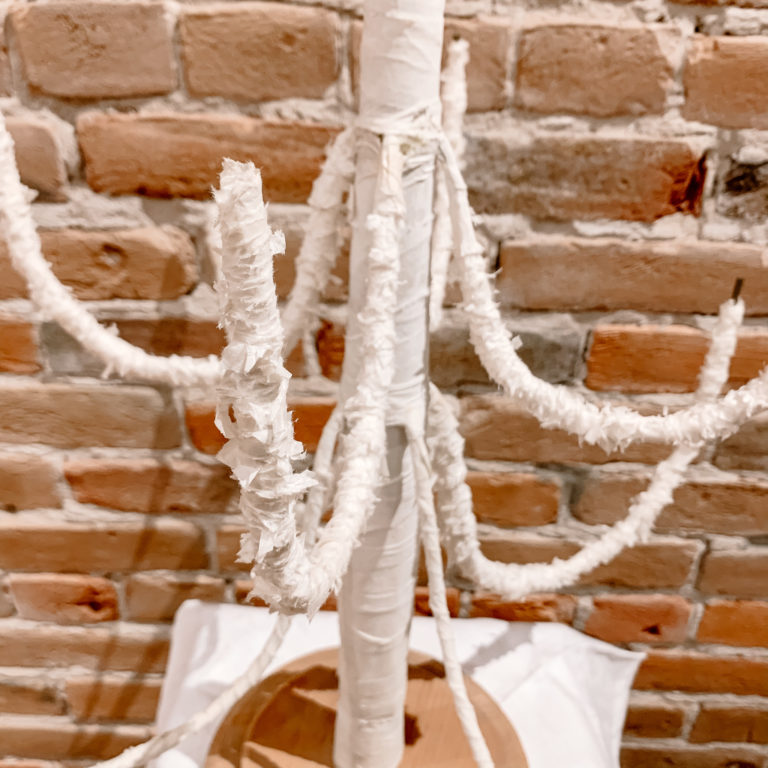
This Ljuskrona was never finished by Lan, including the candleholders.
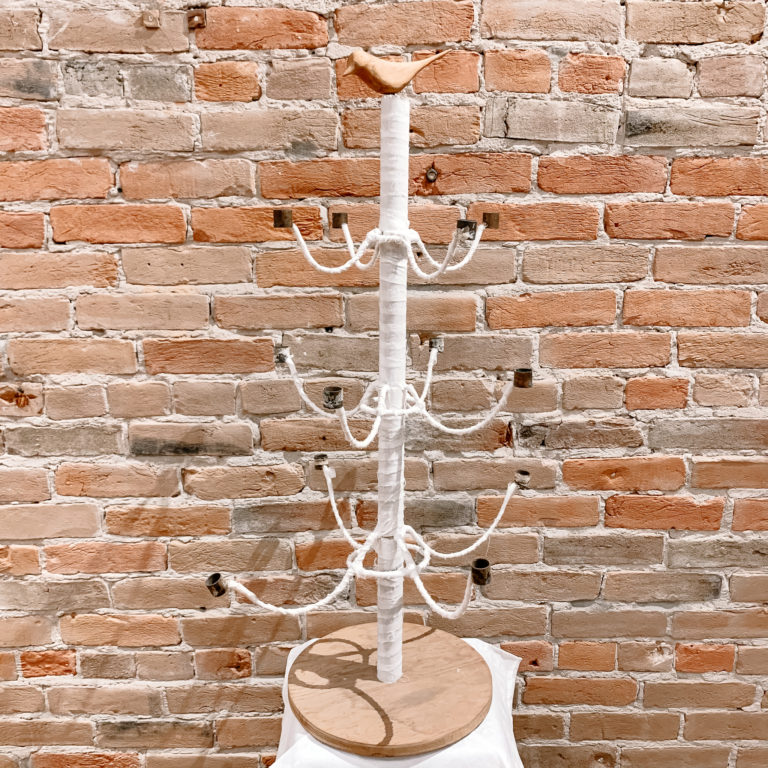


Hugo Shogren made this Ljuskrona for his wife in the 1970’s. He made five that the family knows of. This was a gift from Marge (Norman Shogren’s wife) because she thought Lan could re-wrap it and bring it back “to life”. She apologized for the shape it was in and told Lan to “just throw it away” if he couldn’t use it.



This Ljuskrona was purchased in Lindsborg and the maker is unknown. It came with, what Lan believes is, the original wrapping and was completely “dressed”. Lan had used it at Bethany Home. During its stay over Christmas one year, He observed that from time to time, bits of the paper wrapping seemed to be disappearing on the center of the stem. He discovered one the of residents picking off pieces of the tissue. He immediately rescued it, midway through Advent, and intends to re-wrap those areas.



Lan was told that ‘Tinner John’ most likely crafted this Ljuskrona as he made several for area families living in the Smoky Valley. The tin candle cups would be one of these design elements he would have crafted as he was trained as a tinsmith.
Larson family Ljuskrona



Lisa Larson purchased this Ljuskrona frame when she took a class to learn about the history and how to wrap Ljuskronas from Mark and Mardell Esping in 2015 or 2017. Lisa used the “feather” method for cutting the strips.
Rosalie Peterson Ljuskrona


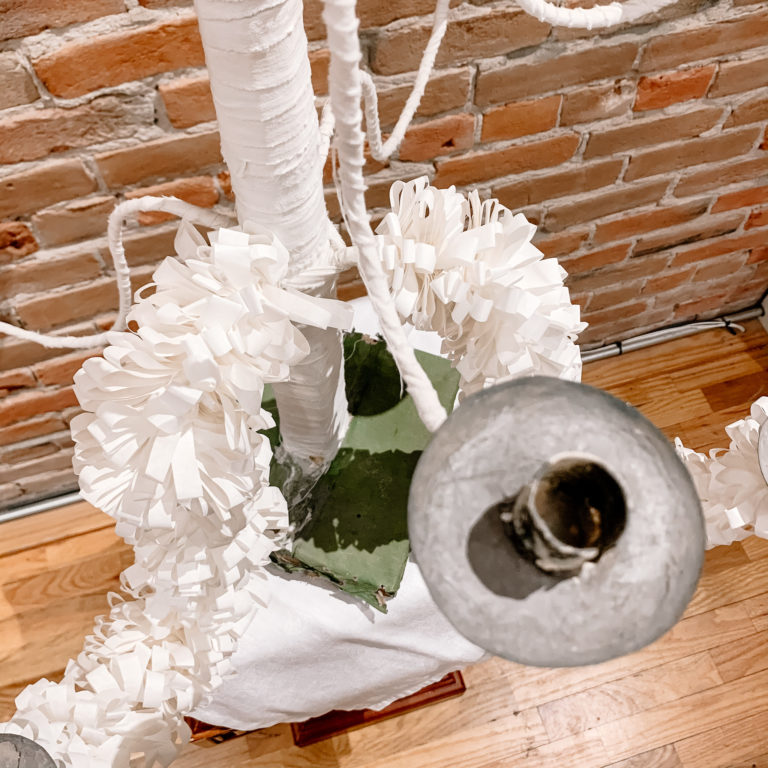
Rosalie wrapped this Ljuskrona while attending a class presented by Mark and Mardell Esping. Growing up, her family did not have a Ljuskrona but she was interested in learning about this Swedish tradition.
nelson family Ljuskrona



This Ljuskrona was giving to Bradly and Marsha Howe by Brad’s mother, Lois (Nelson) Howe. It has been passed down through the family from Lois’ grandparents, Almond and Emma Palmquist, and was given to Elva, the eleventh of twelve children born to Almond and Emma. She “re-tissued” it in the 1940s and it was always on display on her dining room table at Christmas time. In 2013, Marla Elmquist had a workshop on wrapping a Ljuskrona and Marsha participated. One arm of the family heirloom got covered at that workshop. Then another was wrapped a year later. That’s as far as it got!
Examples of Ljuskrona

Wrapped in white jewelers paper. this ljuskrona style is found in Lindsborg, Nebraska, and Minnesota. The style is reminiscent of a maypole. It is wrapped in jewelers paper so will not need to be wrapped for many years.

An example of an unwrapped Ljuskrona frame.



Wrapped in red and green paper, this Ljuskrona was found in a chicken shed that was being torn down. The family had been on the farm for 4 generations. It was made so all of the pieces could be taken apart and stored as a bundle of “sticks” for easy storing and transporting.



Wrapped in green paper, from a Private Collection. This Ljuskrona is a sample of one found in Nebraska and Iowa.
Carla Wilson, Lindsborg



We Found this in the basement of the Swedish Crafts (now Trollslända – Lindsborg Toy Store) after we purchased the building in 2011. One of the arms had never been painted. SVAFC board member and local artist Carla Wilson (FlipArt) was able to match the paint and then added her special touches to the whole piece. It was made to take apart for easy storage. Through some extra research, we believe it more than likely comes from Småland, Sweden. – Lesa & Merle Larson.
SkatelÖv Ljuskrona



Don Anderson & Sons


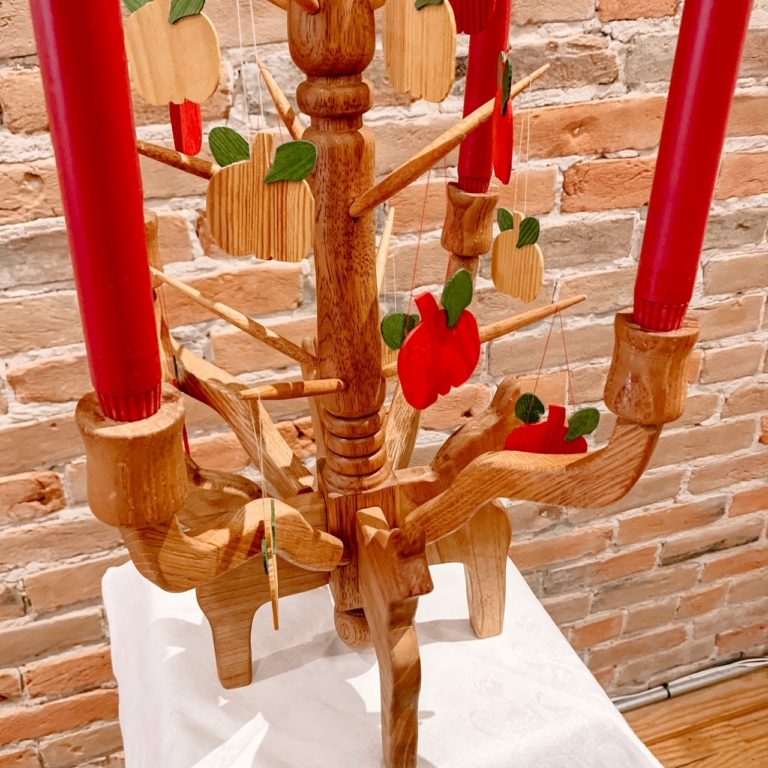
This appletree was purchased in the 1980s from Don when I was attending Bethany College. I was an elementary education major and me, Don, through his work with NEA. It was a gift for my parents for Christmas and now has returned back to me – Lesa Rodene Larson
Al Eklund, Lindsborg


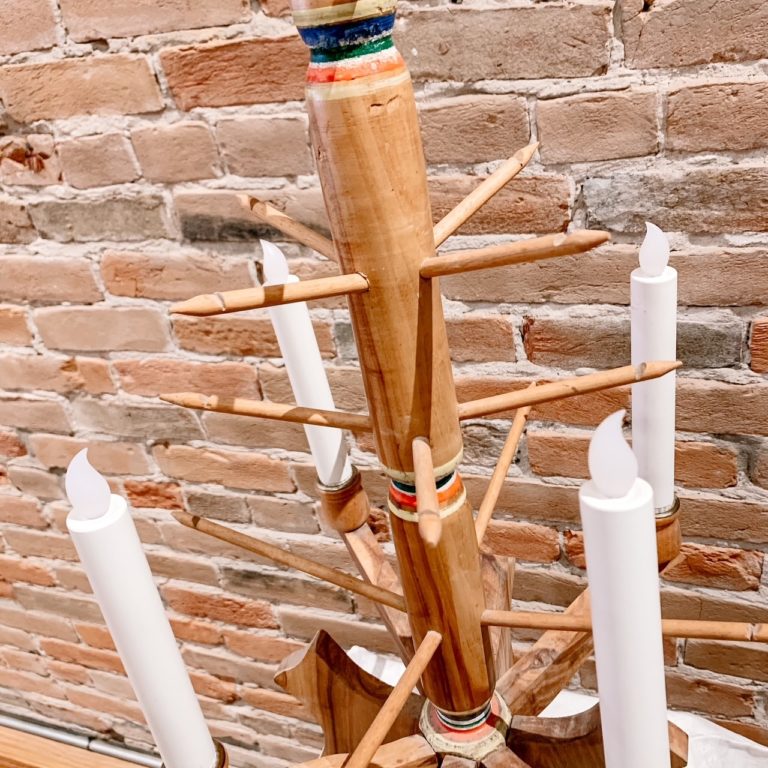
Before I traveled to Europe one summer I had an old apple tree behind my house at 206 N. Washing ton which I had removed. Al Eklund was living in one of the duplexes across the street with his wife Marian. He had a workshop in his garage and asked if I had any wood scraps he could have. I brought him Logs from the apple tree I had cut down and then left for Europe. When I returned six weeks later, Al presented me with an Apple tree he had crafted from the apple logs I had left behind. It just doesn’t get any better with friends like that – Lan Nelson
Lavern (sody) Soderstrom, Lindsborg



Mr. Soderstrom was the Superintendent of School for the Lindsborg Community for 35 years. He used woodworking as a way to relax. His wife, Amanda Completed the painting on this Apple Tree. -Doris Soderstrom Carlson (Poka dots)



The second tree shown is from an Unknown Maker but attributed to Lavern Soderstrom. While the candle arms and bird style are unique in their styling, the candle arms are reminiscent of Sody Soderstrom’s work.
Harlan Shogren, Lindsborg



This is an unusual style for Harlan Shogren who was one of the woodworkers who made Apple Trees for the Hemslöjd. He is known for the Apple Trees he made without horses. The Carved bird on top is especially graceful.
Howard Shogren, Lindsborg



This Apple tree was purchased at TACOL by Gretchen Esping. Gretchen purchased it with the intent that it should not leave the community.



Howard Shogren Apple tree is owned by Brad and Marsha Howe.
Sterling (bud) Benson, Lindsborg
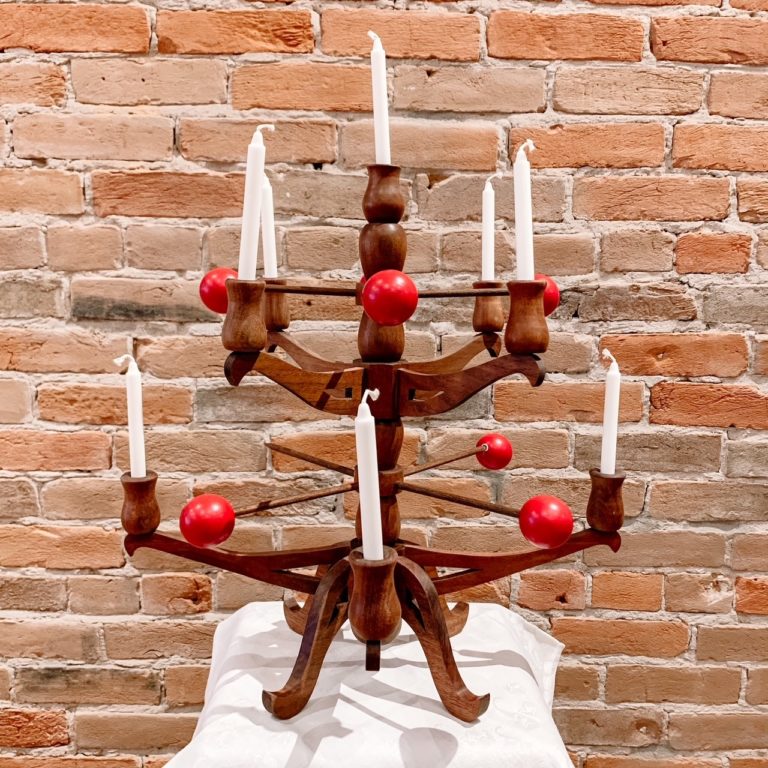


Sterling (Bud) Benson Dr. Benson is Professor Emeritus at Bethany College Department of Education and a woodworker. This Apple Tree is a design he created. It is very much a modern interpretation of the Lindsborg Apple Trees.
Walt Hafermehl, Lindsbog



This whimsical orange Apple Tree was Made by Walt Hafermehl for Lavern (Mrs.Gene Larson) Gretchen Esping purchased it from Tim Stewart, shop owner, in 2012.



The yellow and blue Apple Tree’s construction and design of the branches and candle arms are very similar to Walt Hafermehl. However the central column/turning and horses indicate the possibility it was made by someone else. Perhaps it was the result of a collaboration between two woodworkers.
Jack Turner, Lindsborg



When Jack moved to Wichita to be closer to his daughter, he told Lan Nelson that everyone in his family had one of his Apple Trees that wanted one. This was an “extra” and he thought I would like to have it. Lan couldn’t accept his gift quick enough!
Malcom Esping, Lindsborg



Circa 1953. Margaret Greenough received an Apple Tree from Sweden and Showed it to Malcolm Esping. Malcolm asked to copy it, and that year he made an apple tree for each of his brothers, Kenneth, Quinton, and Donald, and one for his sister Ebba. A bit later, Chester Palmer saw these at Malcolm’s Studio and Gallery on the West State Street and copied it and began making them, circa 1954. This apple tree was purchased by Malcolm’s daughter, Gretchen, at the Raymer Society’s Annual Auction in 2012.
Chester (Chet) Palmer, Lindsborg







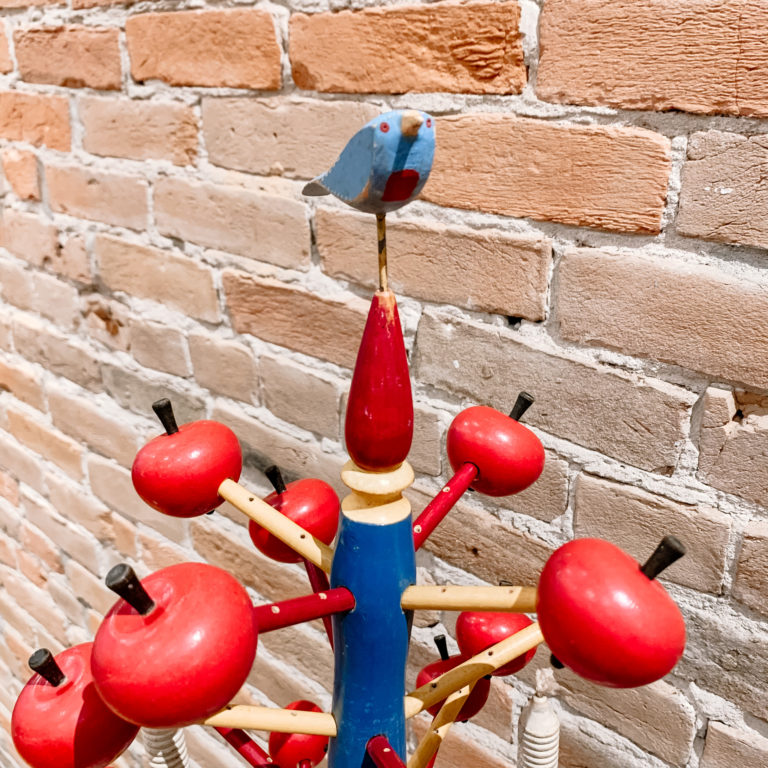
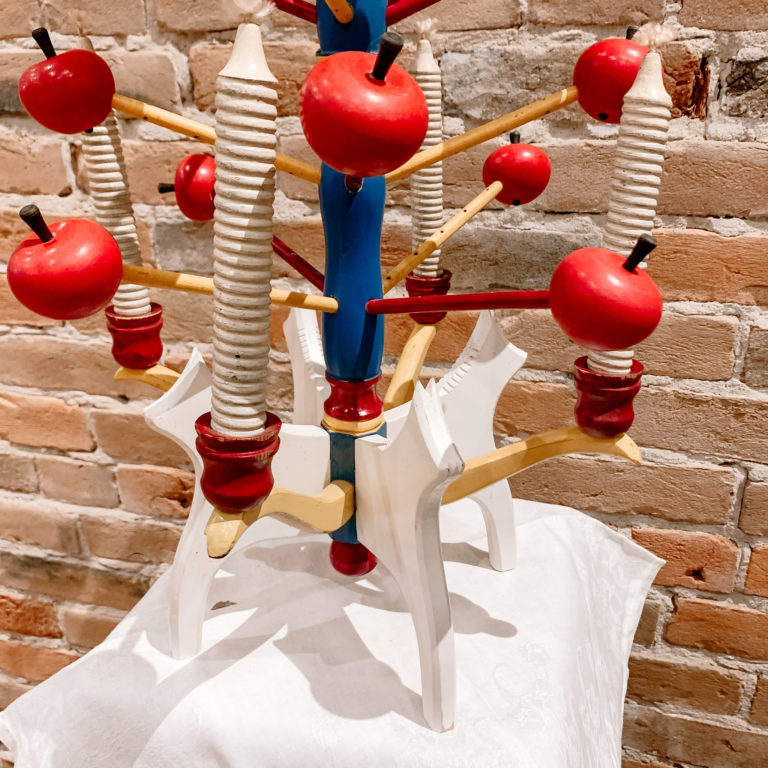



The stained Apple Tree with bluebird decorations was a gift to SVAFC Treasurer Carol Gusenius from her husband, Bill in the mid- 1970s.
Lester Raymer, Lindsborg
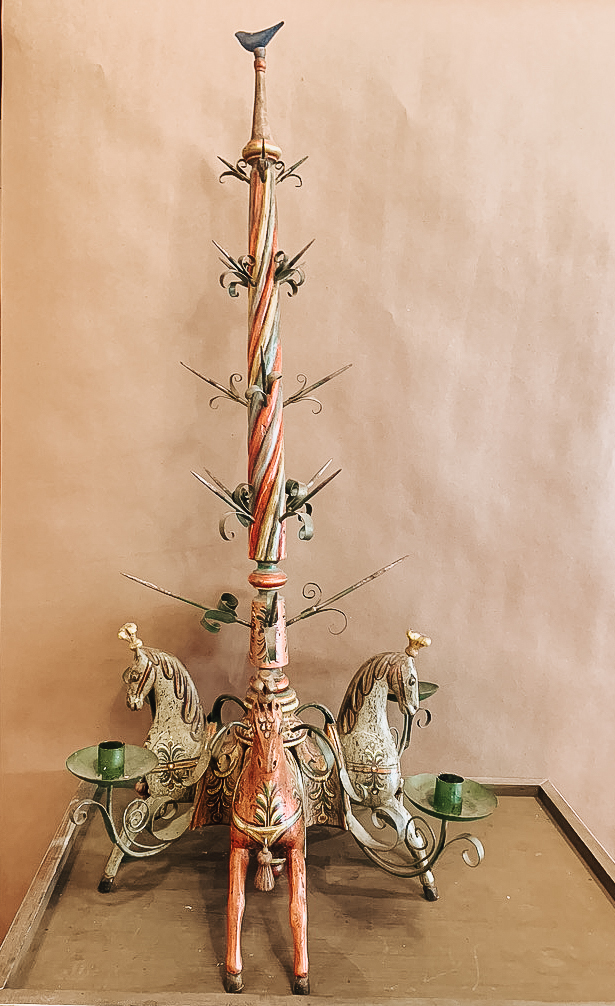


Lester Raymer’s Apple Tree on loan for the permanent collection of the Red Barn Studio Museum. This apple tree is one of several that Lester made, adapting the Swedish traditional craft using his own style. When Lester moved to Lindsborg and Married Ramona Weddle in 1945, he showed a keen interest in his adopted community’s Swedish heritage. He helped Ramona paint kurbits, stylized flowers, on downtown business windows for events and festivals. He experimented with several Swedish handicrafts and designed his own Swedish costume for the 1946 Svensk Hyllningsfest. He and Ramona began preparations weeks before festivals to have enough art and crafts on hand to sell.
Maker Unknown, Sweden



(Svenska Äppelträd) This Apple Tree was purchased with the apples and the birth as part of a Christmas display. It is very similar to the Apple Trees Chester (Chet) Palmer made. The bird is probably not the original one. It is painted to look simial to the ones Mr. Palmer created for his trees.
